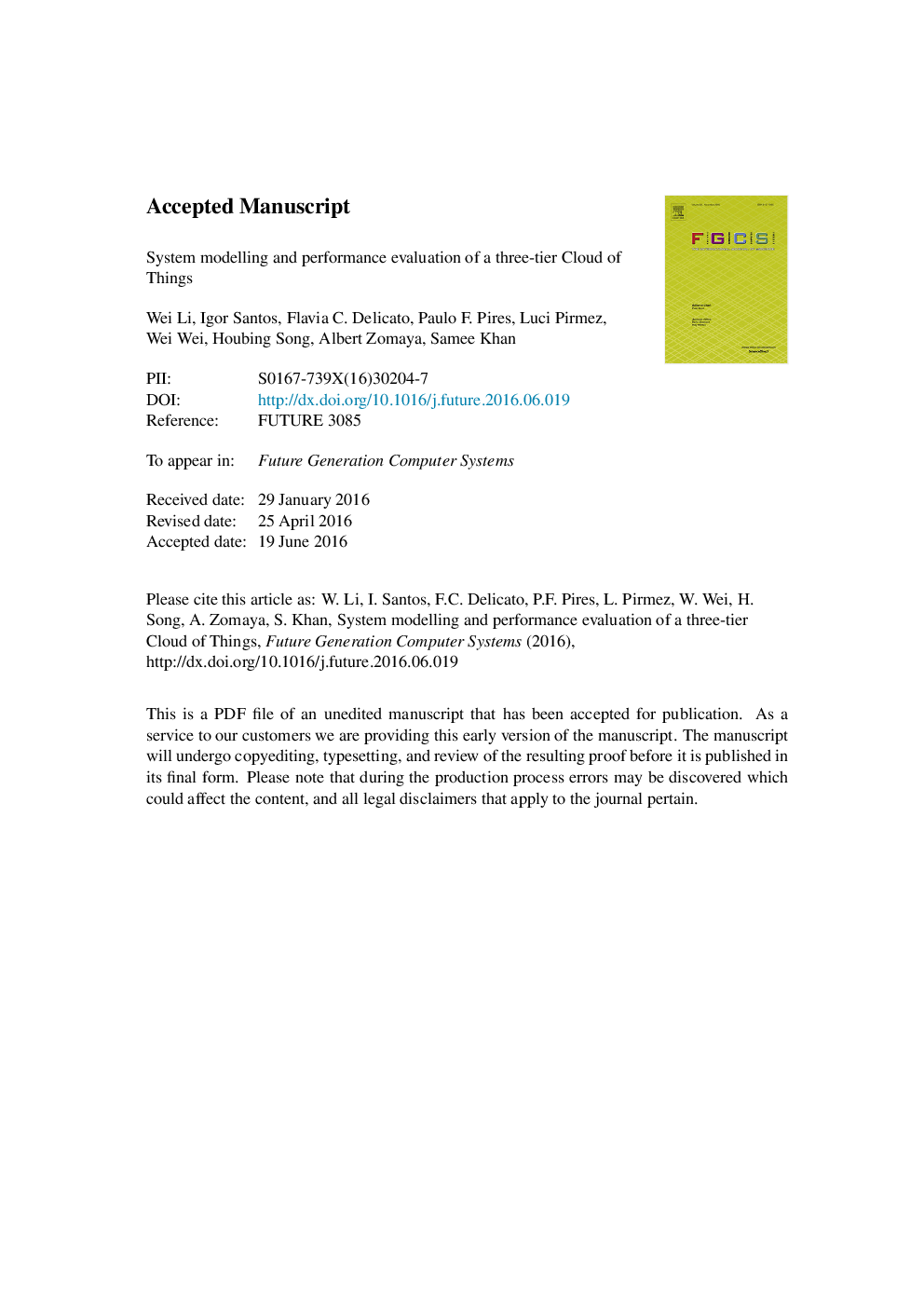| Article ID | Journal | Published Year | Pages | File Type |
|---|---|---|---|---|
| 4950463 | Future Generation Computer Systems | 2017 | 41 Pages |
Abstract
The emergent paradigm of fog computing advocates that the computational resources can be extended to the edge of the network, so that the transmission latency and bandwidth burden caused by cloud computing can be effectively reduced. Moreover, fog computing can support and facilitate some kinds of applications that do not cope well with some features of cloud computing, for instance, applications that require low and predictable latency, and geographically distributed applications. However, fog computing is not a substitute but instead a powerful complement to the cloud computing. This paper focuses on studying the interplay and cooperation between the edge (fog) and the core (cloud) in the context of the Internet of Things (IoT). We first propose a three-tier system architecture and mathematically characterize each tier in terms of energy consumption and latency. After that, simulations are performed to evaluate the system performance with and without the fog involvement. The simulation results show that the three-tier system outperforms the two-tier system in terms of the assessed metrics.
Related Topics
Physical Sciences and Engineering
Computer Science
Computational Theory and Mathematics
Authors
Wei Li, Igor Santos, Flavia C. Delicato, Paulo F. Pires, Luci Pirmez, Wei Wei, Houbing Song, Albert Zomaya, Samee Khan,
